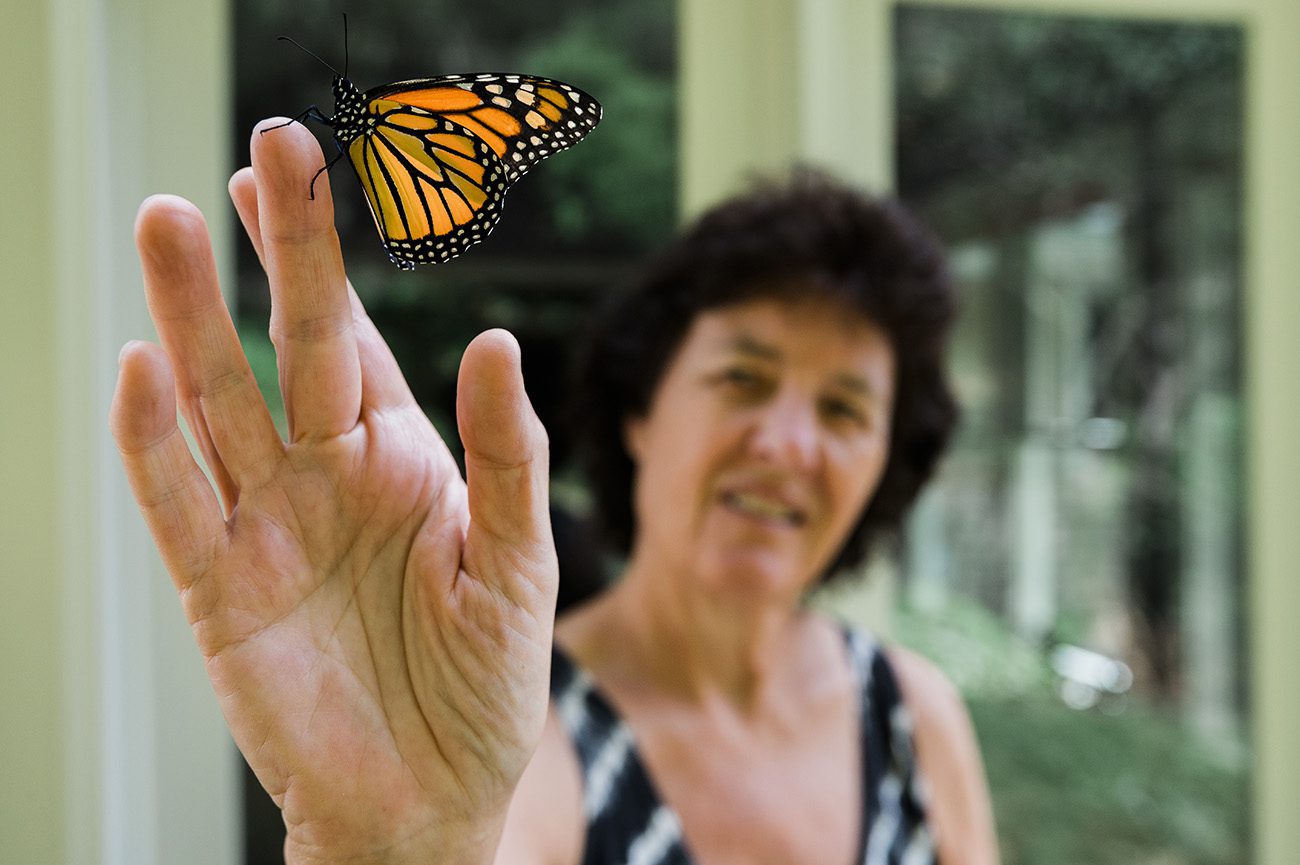SALEM — Nancy Morgan is trying to save the world one yard at a time.
Morgan said she believes the work of saving the environment falls, in part, to private property owners who “must plant native.” It is that belief that has led Morgan to plant a butterfly-friendly garden for the last decade — an all the more crucial effort in the wake of Migratory Monarch Butterflies joining the International Union for the Conservation of Nature’s list of endangered species on July 21 due to significant population decreases in population over the past two decades.
Unlike the US Federal Endangered Species List, this classification triggers no protections or regulations. Until the federal government takes action, Monarch Butterflies and the people who care about them are left to their own devices.
According to Monarch Watch, a nonprofit education, conservation, and research program at the University of Kansas, the Monarch Butterfly population has increased in the last year. However, the population has been on a dramatic and continued decline in the 21st century.
Suzanne Hale of the Swampscott Conservancy said the main threat to monarchs is the reduction of native plants and land for the butterflies and their young to live. When monarch butterflies migrate from Texas to Massachusetts, they lay their eggs on milkweed, the only plant monarch caterpillars can eat. As they grow into butterflies, they eat nectar from native plants.
The severe drought in Eastern Massachusetts this year has left milkweed and native plants wilted or even dead. With unsuitable spots to lay eggs and little food, not only will living monarch butterflies perish but their young will be less likely to be able to survive.
“I’m not going to sugarcoat it,” said Hale. “Even the best of intentions in terms of planting a milkweed garden may not be enough. We had a very significant drought this year and while the native gardens I have planted are surviving, they’re still withered from the drought.”
Morgan said she sees supporting monarchs as a way to fight against environmental degradation.
“If you want to have a planet to live on and you want to have a life to live… we better do everything we can to save this world. This is the biggest existential crisis that our species and all the other species on the earth have faced– and we’re the only ones who can fix it, and we’re not doing it. So I’m trying one person at a time to do it.”
Morgan plants three different varieties of milkweed as well as mostly native plants.
“I’m trying to support the caterpillars with the leaves of the milkweed and then the butterflies with blossoms and nectar from early spring into the fall,” she said.
Morgan’s garden is an unofficial Monarch Waystation, which means that it supports the lifecycle of migratory monarch butterflies in a way other gardens do not. In order to create a Monarch Waystation, gardens must be 100 square feet of native plants and at least ten milkweed plants of two different species.
Hale said that monarchs are crucial for the survival of humanity.
“I haven’t always been an insect lover myself and sometimes it can be hard to see why insects are important in our lives. The primary reason they are so critical to human survival is because they are the bottom of the food chain and everything above it relies on the proliferation of insects in order to survive,” she explained.
“Holistically supporting caterpillars… that are indigenous to our region is incredibly helpful and essential to a healthy and balanced ecosystem,” she continued.
Hale also pointed out that monarch butterflies’ presence in nature is important beyond the ecological aspect.
“They are beautiful, but they also have this incredible migration that not many other insects have anything remotely similar to, and it is a testament to their survival. We think of butterflies as being fragile and delicate but, you know, flying thousands of miles does not indicate fragility. It is really a testament to strength and beauty.”
To learn more about Monarch Waystations and native plants, visit www.monarchwatch.org/waystations/. To find your native plants, visit the Audubon’s Native Plants Database.

